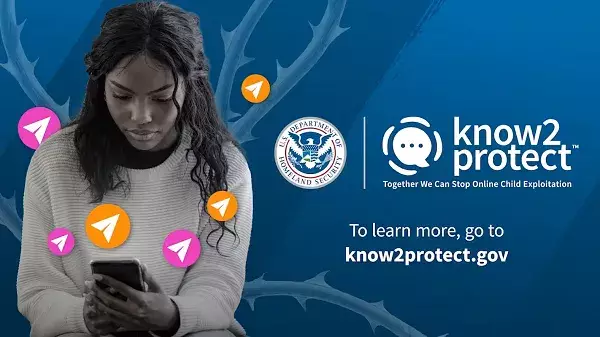In the digital age, where connectivity is at an all-time high, the risks associated with online interactions loom larger than ever. Snapchat, a platform predominantly frequented by younger users, is taking a commendable stance against the alarming incidence of child sexual exploitation and abuse (CSEA). As part of its involvement in the Know2Protect initiative led by the U.S. Department of Homeland Security, Snapchat is proactively engaging in raising awareness and educating its younger demographic. Launched in April of the previous year, this initiative seeks to arm young users with the knowledge they need to navigate the treacherous waters of the internet safely.
The challenge is formidable. Every day, countless teens engage in behaviors that put them at risk, such as sharing intimate images or interacting with unknown individuals online. Snapchat has made commendable strides by integrating awareness features directly into its platform and conducting outreach to reinforce these messages. However, the figures emerging from Snap’s recent research present both progress and concerning stagnation in crucial areas of online safety related to young users.
Analysis of Recent Findings
Snap’s research reveals striking insights. Despite ongoing educational efforts, the statistic showing that 24% of teens have shared intimate imagery remains unchanged from previous years. This stability in alarming data underscores a grave truth: many young users are still vulnerable to exploitative situations. Meanwhile, 33% reported experiences of online grooming, exhibiting only a slight improvement. While a 1% decrease in catfishing cases sounds reassuring, the reality is grim. It reflects a persistent issue that trends in online deception continue to surround adolescents.
Moreover, more than half of those who admitted to sharing intimate content expressed feelings of lost control over their images once made public. The gravity of this situation becomes even more pronounced when focusing on teens, where a staggering 63% reported losing control of their shared imagery—a significant rise that amplifies the urgency for continuous intervention and education. These numbers present a disturbing narrative of youth engagement with digital platforms that must be addressed urgently.
Rising Awareness—Yet Room for Growth
On a more positive note, the awareness surrounding the Know2Protect campaign has seen a notable surge. Approximately 28% of respondents were familiar with the campaign, a marked improvement that reflects Snapchat’s effective outreach to its audience about online safety. Even more promising is that nearly 89% of these aware users have sought additional information on online safety—indicative of a growing consciousness among youths regarding their digital footprints and associated risks.
Such increased engagement suggests a potential for positive behavioral shifts among younger users. Awareness alone, however, is not a panacea for the entrenched issues currently faced online. It remains critical for Snapchat and similar platforms to not only maintain momentum in their awareness efforts but also enhance their protective mechanisms. There is an urgent need to translate awareness into actionable, informed decisions that young users can continuously take to shield themselves from exploitation and abuse in digital spaces.
Continual Improvement of Protective Measures
Snapchat’s commitment to integrating protective measures, such as the PhotoDNA technology leveraging Google’s CSAI Match to filter out illegal content and enhance user safety, demonstrates a solid step in the right direction. Furthermore, the addition of in-app alerts for suspect friend requests highlights their proactive approach toward warning users about potential threats. The introduction of more robust parental controls through its Family Center also signifies a shift towards empowering guardians to participate in their children’s online activities.
Despite these advancements, one must consider the rapidly evolving nature of online threats, especially with the rise of sophisticated technologies like AI deepfakes, which complicate detection and prevention efforts. Snap must remain vigilant and adaptive in strengthening its defenses against these emerging threats while fostering a culture of safety for its younger users.
In the battle against online exploitation, Snapchat’s efforts encapsulate both hope and a stark reminder of the ongoing challenges present in the digital landscape. As dialogues surrounding online safety continue to grow, platforms must harness these conversations to drive meaningful changes that impact the lives of countless young individuals engaging online. The urgency of protecting vulnerable youth cannot be overstated, making Snap’s role in this conversation more critical than ever.


Leave a Reply